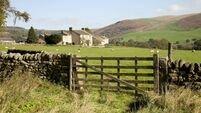Street politics: life in the slow lane
THE bright yellow gorse that splashes the roadside between Cork and Carrigaline glows in the early summer sunshine, and the young leaves on the trees glisten and sway in the breeze.
A passing motorist has plenty of time to admire nature’s adornments on this stretch of road, no matter what time of day it is.













